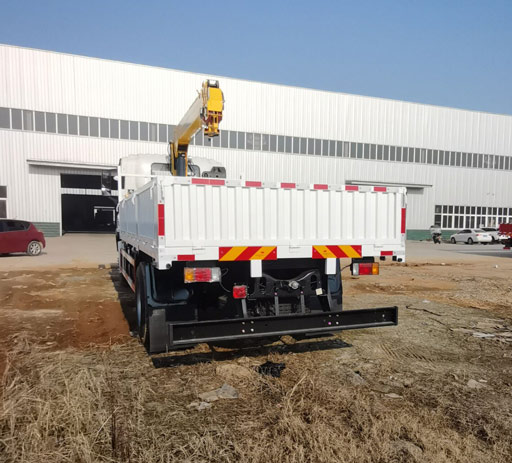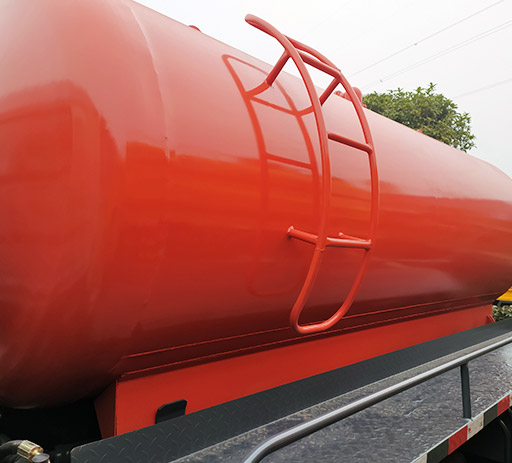Sewage Trucks: Essential Vehicles for Waste Management

Introduction
Sewage trucks play a crucial role in maintaining public health and environmental standards by transporting waste from homes, businesses, and municipal treatment facilities. These specialized vehicles are designed to handle liquid waste, ensuring proper disposal and treatment processes. As urban populations grow and infrastructure demands increase, understanding sewage trucks and their operations becomes essential for effective waste management. This comprehensive article will explore the features, types, operations, and the importance of sewage trucks in our society.
What is a Sewage Truck?
A sewage truck, often referred to as a vacuum truck or tank truck, is a vehicle equipped with a strong suction pump and a large tank to collect and transport liquid waste, such as sewage, sludge, and other forms of wastewater. These trucks are vital for services such as septic tank cleaning, grease trap pumping, and sewage removal from municipal systems.
Key Components of a Sewage Truck
Sewage trucks are designed with specific components that ensure efficient waste removal and transport:
- Collection Tank: A large, sealed tank designed to hold liquid waste before transport.
- Suction Pump: A powerful pump that creates a vacuum to suck up waste from a source.
- Hose System: Flexible hoses that connect to the suction pump and are used to draw in waste.
- Discharge Valve: A valve at the bottom of the tank that allows for the safe and controlled release of waste at treatment facilities.
- Chassis: The vehicle’s base that supports all these components, typically a heavy-duty truck designed for carrying heavy loads.
Types of Sewage Trucks
There are several types of sewage trucks, each designed for specific functions within waste management. Understanding these types can help in choosing the right vehicle for particular needs.
1. Vacuum Trucks
Vacuum trucks use suction to collect liquid waste. They are versatile vehicles that can be used for various applications, such as cleaning septic tanks and pumping out grease traps.

2. Combination Trucks
Combination trucks are equipped with both vacuum and pressure systems, allowing them to vacuum solid and liquid waste from locations while also cleaning sewer lines. This versatility makes them essential for municipal waste management.
3. Sludge Trucks
Sludge trucks are designed specifically for transporting thick sludge from treatment plants. They usually have larger tanks to accommodate the increased volume of material.
4. Mobile Treatment Units
These trucks combine waste collection with onboard treatment solutions. They can process waste and discharge treated water, making them useful in remote areas where waste treatment facilities are lacking.
How Sewage Trucks Operate
The operation of sewage trucks involves multiple steps, from waste collection to disposal:
1. Waste Collection
When a sewage truck arrives at a site, the operator deploys a hose connected to the suction pump and inserts it into the sewage source, such as a septic tank or sewage pit. The pump is activated, creating a vacuum that draws the waste into the collection tank.
2. Transport
After the tank is filled, the truck is driven to a treatment facility or designated disposal site. The collection tank is designed to be sealed securely during transport to prevent leaks and spills.
3. Discharge
Upon arrival at the disposal site, the operator positions the truck above the discharge area. The discharge valve is opened, allowing the waste to flow out of the tank and into the treatment system.
The Importance of Sewage Trucks in Waste Management
Sewage trucks are vital for maintaining environmental health and public safety. Their roles include:
1. Public Health Protection
By efficiently removing waste, sewage trucks prevent the buildup of odors, pathogens, and harmful bacteria that could lead to health hazards.
2. Environmental Preservation
Proper waste disposal is crucial for preserving ecosystems. Sewage trucks ensure that waste is transported to treatment facilities where it can be properly processed and treated before being released into the environment.
3. Infrastructure Support
Municipal sewer systems rely heavily on sewage trucks to maintain proper functionality. Regular cleaning and maintenance of sewer lines prevent blockages and overflows.
4. Disaster Response
In emergency situations like floods or natural disasters, sewage trucks can provide onsite waste removal to prevent contamination and maintain sanitation in affected areas.
Practical Examples of Sewage Truck Uses
Sewage trucks serve a variety of industries and applications:
1. Residential Septic Tank Services
Homeowners with septic tanks often require regular pumping to prevent overflow and maintain system functionality. Sewage trucks are called to service these tanks when they reach capacity.

2. Commercial Grease Trap Cleaning
Restaurants and food processing facilities often have grease traps that must be emptied regularly to prevent backups. Sewage trucks handle this task efficiently, enabling these businesses to comply with health regulations.
3. Municipal Sewage Management
Local governments utilize sewage trucks to maintain sewer systems, conducting routine cleanings and responding to emergencies to minimize overflows and backups.
4. Industrial Waste Treatment
Industries generating wastewater may require sewage trucks for the removal of byproducts and sludge, ensuring compliance with environmental regulations.
Choosing the Right Sewage Truck
When selecting a sewage truck, several factors should be considered to ensure optimal performance:
1. Purpose and Capacity
Determine the primary use of the sewage truck. Will it be used for residential services, municipal needs, or industrial applications? Choose a capacity that matches expected waste volume.
2. Vehicle Size
The size of the truck should correspond with local regulations and the accessibility of service locations. Smaller trucks may be required for residential areas with narrow lanes.
3. Equipment Quality
Look for trucks with reliable vacuum systems and durable tanks. Quality components reduce maintenance costs and increase operational efficiency.
4. Manufacturer Reputation
Research manufacturers and their reputation in the waste management industry. Companies known for quality service and reliable vehicles are often the best choices.
Maintenance of Sewage Trucks
Regular maintenance of sewage trucks is crucial to ensure their longevity and reliability:
1. Regular Inspections
Inspect the vacuum pump, hoses, and tanks regularly for signs of wear and tear. Early detection of issues prevents costly repairs in the future.
2. Cleaning the Tank
After each job, it’s essential to properly clean the tanks and hoses to avoid the buildup of residue that can lead to odors and contamination.
3. Engine Maintenance
Keep up with routine engine maintenance, including oil changes, filter replacements, and checking fluid levels to ensure optimal performance.
4. Training Operators
Operators should receive thorough training on how to handle and operate sewage trucks effectively, promoting safety and efficiency on the job.
Future Trends in Sewage Truck Technology
As technology advances, so do sewage trucks. Several trends are shaping the future of this critical waste management sector:

1. Enhanced Vacuum Systems
New vacuum technology allows for more efficient waste removal and reduced energy consumption.
2. Eco-Friendly Options
The push for greener solutions has prompted manufacturers to produce sewage trucks that operate on alternative fuels and reduce emissions.
3. Smart Technology Integration
GPS tracking and telematics data are increasingly being integrated into sewage trucks, allowing for better route planning and efficiency monitoring.
4. Automated Waste Processing
Advancements in onboard treatment systems mean that some sewage trucks can now treat waste as they collect it, reducing the amount transported to external processing facilities.
FAQ Section
1. How often should septic tanks be pumped?
Septic tanks typically need to be pumped every 3 to 5 years, but frequency may vary based on household size and water usage.
2. What happens to the waste after it is collected by sewage trucks?
After collection, the waste is transported to treatment facilities where it undergoes processes to remove contaminants before being released into the environment or returned for reuse.
3. Can sewage trucks transport hazardous waste?
No, sewage trucks are specifically designed for liquid waste. Transporting hazardous waste requires specialized vehicles equipped to handle such materials safely.
4. What is the average cost of hiring a sewage truck service?
The cost can vary based on location, type of service, and amount of waste. Typically, prices range from $200 to $600 for residential septic tank pumping.
5. Are there regulations governing sewage truck operations?
Yes, sewage truck operations are regulated by environmental agencies to ensure safe handling, transport, and disposal of waste materials.
6. How can sewage truck operators ensure safety on the job?
Operators should follow safety protocols, wear protective gear, maintain the vehicle, and receive proper training on handling waste materials.
